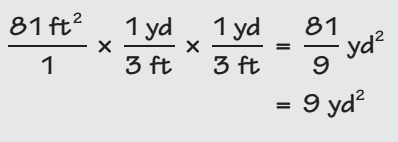PSAT Math: Rates and Measurements
By now, you’ve become adept at using algebra to answer many PSAT math questions, which is great, because you’ll need those algebra skills to answer questions involving rates. You’re likely already familiar with many different rates—kilometers per hour, meters per second, and even miles per gallon are all considered rates.
A fundamental equation related to rates is “amount = rate × time”. If you have two of the three components of the equation, you can easily find the third.
You’ll notice units of measurement are important for rate questions (and others that require a unit conversion) and, therefore, also an opportunity to fall for trap answers if you’re not careful. How can you avoid this? Use the factor-label method (also known as dimensional analysis). The factor-label method is a simple yet powerful way to ensure you’re doing your calculations correctly and getting an answer with the requested units.
For example, suppose you’re asked to find the number of cups there are in two gallons. First, identify your starting quantity’s units (gallons) and then identify the end quantity’s units (cups). The next step is to piece together a path of relationships that will convert gallons into cups, canceling out units as you go. Keep in mind that you will often have multiple stepping stones between your starting and ending quantities, so don’t panic if you can’t get directly from gallons to cups.
The test makers won’t expect you to know English measurements by heart. Instead, they’ll provide conversion factors when needed. For example, a gallon is the same as 4 quarts, every quart contains 2 pints, and a pint equals 2 cups. And there you have it! Your map from gallons to cups is complete. The last step is to put it together as a giant multiplication problem. Each relationship, called a conversion factor, is written as a fraction. The basic rules of fraction multiplication apply, so you can cancel a unit that appears in both the numerator and denominator.
The PSAT will not require you to memorize conversions for conventional units. If the test asks you to convert miles into inches, for example, you will be provided with enough conversion factors to solve the problem.
Follow along as we convert from gallons to quarts to pints to cups using the factor-label method:

distance = rate x time is actually a variation of this process. Suppose you travel at 60 mph for 5 hours. You would calculate the distance traveled using the equation d = r x t = 60mi × 5h = 300 miles. The units for hours cancel out, leaving only miles, which is precisely what you’re looking for, a distance. This built-in check is a great way to ensure your path to the answer is correct. If your units are off, check your steps for mistakes along the way. The PSAT will never ask you for a quantity such as miles or gallons, so if you end up with funky units like that, you’ve made an error somewhere in your work.
PSAT Rates Practice Question
Work through the Kaplan Method for Math to solve this question step-by-step. The following table shows Kaplan’s strategic thinking on the left, along with suggested math scratchwork on the right.
| Strategic Thinking | Math Scratchwork |
|---|---|
| Step 1: Read the question, identifying and organizing important information as you go | |
| You’re asked how many square yards of grass the homeowner needs. You know he needs 81 square feet of grass. | 81 ft2 grass needed |
| Step 2: Choose the best strategy to answer the question | |
| How do you convert from square feet to square yards? | Use factor-label method |
| What are the starting and ending quantity units? Which conversion factors are needed? | |
| You’re starting with square feet and need to convert to square yards. You know that 1 yd = 3 ft, but be careful: 1 yd2 is not the same as 3 ft2. Consider each feet-to-yards conversion separately. | starting qty: 81 ft2 end qty: ? yd2 |
| You’ll need to multiply by your conversion factor twice. Remember your rules for exponents: To cancel out ft2, you’ll need to divide by ft2. |  |
| Step 3: Check that you answered the right question | |
| You’ve correctly converted from square feet to square yards to get the correct answer, (A). | 9 yd2 |
